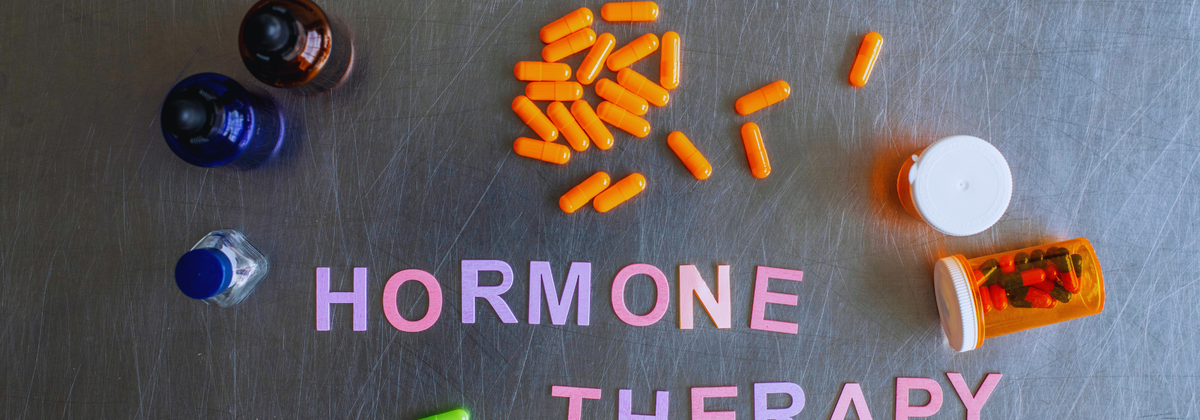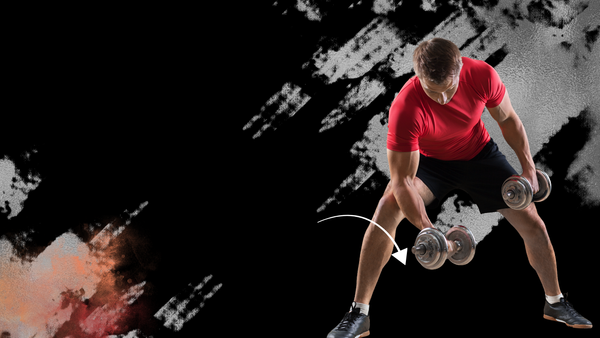Optimising testosterone naturally

Optimising testosterone naturally is a practical how-to guide for adults who want safe, evidence-based ways to support this key hormone.
The body produces most testosterone in the testes and ovaries, with small amounts produced by, the adrenal glands. Levels peak around age 19 and fall about 1–2% per year after 30, so lifestyle choices matter as people age.
This introduction outlines the strongest levers: resistance training and HIIT, a balanced diet with healthy fats, quality sleep with morning peaks after deep rest, stress control to limit cortisol, and weight loss for overweight men.
It also notes limits: some supplements show mixed evidence, and endocrine disruptors or excess alcohol can blunt gains. The guide explains simple weekly actions to increase testosterone or boost testosterone safely and when to seek medical testing for symptoms like low energy or sexual change.
Key Takeaways
- Exercise, especially resistance work, and HIIT,alters how the body handles insulin and inflammation, thereby altering can raise levels acutely.
- Balanced diet and enough healthy fat support hormone production.
- Good sleep and stress reduction help preserve morning peaks.
- Weight loss in overweight adults is a strong, natural booster.
- Limit alcohol and avoid endocrine-disrupting chemicals when possible.
- Consult a clinician before using supplements or if symptoms persist.
Why testosterone matters and how natural optimization works
Testosterone helps shape muscle, bone strength, sex drive, and many daily functions in men and women.
Levels vary by age and time of day, with a typical morning rise after deep sleep. Because of that pattern, a single blood test can miss true status unless timed correctly.
Low levels can produce clear signs: low libido, erectile dysfunction, loss of muscle, mood changes, and less body hair. Clinical evaluation pairs symptoms with blood results before labeling a condition.
Higher body fat links to lower hormone levels through inflammation and altered signaling. Weight loss and preserved muscle often raise levels and improve overall health.
"Address movement, diet, sleep, and stress first; medical therapy follows when necessary."
- Roles: sperm production, sex drive, muscle and bone health.
- Timing: morning blood checks are most informative.
- When to act: symptom-plus-blood approach avoids overdiagnosis.
| Feature | Effect | Practical note |
|---|---|---|
| Muscle mass | Supports strength and size | Resistance training preserves levels |
| Body fat | Higher fat often lowers levels | Weight loss can restore hormone balance |
| Mood & cognition | Influences energy and focus | Address sleep and stress to protect levels |
Optimising testosterone naturally through smart training
Strength-focused workouts raise acute hormone responses and help preserve muscle mass with age.
Prioritize resistance training and consider HIIT for short-term boosts
Compound lifts—squats, deadlifts, presses, and rows—should form the core of a training plan. Two to four sessions per week provide a reliable way to increase testosterone and support muscle and strength.
How much, how often: practical weekly training targets
Even 30–40 minute weight sessions twice weekly produce metabolic and hormonal benefits that can last 24–48 hours. Add 1–2 short HIIT sessions (6–10 intervals of 30–60 seconds) to nudge levels without excess fatigue.
Avoid overdoing endurance that can depress hormone levels
High-volume endurance blocks, like multi-hour cycling or marathon training, may lower testosterone levels in men. Favor easy-to-moderate aerobic work and monitor morning energy and recovery.
Quick weekly templates
- Full-body: Mon/Thu strength + Wed HIIT
- Upper/lower split: Mon/Tue/Thu/Fri with one short interval session
| Focus | Frequency | Benefits | Notes |
|---|---|---|---|
| Compound resistance | 2–4/week | Increase strength, muscle mass | Progress overload; prioritize form |
| HIIT | 1–2/week | Short-term hormonal boost | Use full recovery between intervals |
| Endurance | 2–4/week (low-moderate) | Cardio health without hormonal cost | Avoid excessive volume |
Dial in your diet to support testosterone levels
A balanced meal plan makes a measurable difference to hormone balance and recovery. Eating enough protein helps preserve muscle and supports training recovery, while steady carbs fuel sessions without large energy swings.
Balance protein, carbs, and healthy fats
Aim for 3–4 meals with protein at each sitting. This pattern steadies energy and helps fat loss without chronic under‑ or over‑eating, which can disrupt hormone levels.
Fat quality matters
Very low‑fat diets can lower testosterone levels. Prioritize fats from olive oil, avocados, nuts, seeds, eggs, and fatty fish to support hormone production and recovery.
Micronutrients to watch
Vitamin D—from salmon and fortified milk—and zinc—from oysters and lean beef—affect how the body produces testosterone. Magnesium from spinach, nuts, and beans also supports muscle and metabolic health.
Sample day for men’s health
Breakfast: Greek yogurt with oats and berries. Lunch: salmon, quinoa, and spinach dressed with olive oil. Snack: a handful of almonds and fruit. Dinner: lean beef, sweet potato, and mixed greens.
- Limit ultra‑processed foods and refined sugars to reduce inflammation and negative hormonal effects.
- Have periodic blood checks for vitamin D and follow clinician guidance on supplementation if needed.
For more food-based ideas, see natural foods that increase testosterone.
Reduce excess body fat to counter low testosterone
Abdominal fat alters how the body handles insulin and inflammation, thereby alteringthe hormone balance.
Excess fat can suppress hormone production via inflammatory signals and insulin resistance. That process contributes to lower testosterone and reduced vitality in many men.
How weight and body composition affect hormones and cortisol
Chronic stress raises cortisol, which shifts energy to central fat storage and works against hormone recovery. Even modest losses — 15–20 pounds — often improve circulating levels in studies and clinical practice.
Evidence-based fat-loss strategies that preserve muscle mass
- Create a small, consistent calorie deficit and aim for gradual change to sustain results.
- Keep protein high and use progressive resistance training to protect muscle mass and metabolic rate.
- Manage stress and prioritize sleep; both curb cortisol and help with fat loss.
- Track objective markers: waist circumference, weekly weight trends, and strength performance.
"Sustained, modest weight loss is one of the clearest lifestyle changes that raises hormone levels for many men."
For practical tools and guidance on safe approaches, see improving low testosterone.
Sleep and stress: daily levers for hormone production
How someone sleeps determines whether early-morning hormone peaks are robust or blunted. Nighttime recovery and daytime coping both shape hormonal balance and overall health.
Sleep targets and timing
Aim for 7–9 hours nightly and keep bed and wake times consistent. Deep sleep in the first half of the night supports morning testosterone peaks and metabolic recovery.
Improve hygiene: a cool, dark room, a wind‑down routine, limit late caffeine and screens, and keep weekends aligned with workday wake times.
Tame cortisol with simple habits
Chronic stress raises cortisol, which can suppress testosterone and promote abdominal weight gain. Short daily tactics lower that risk.
- Daily walks and brief breathing or mindfulness sessions.
- Short resistance sessions with planned recovery to preserve levels.
- Track stress and sleep with logs or wearables to spot patterns.
Shift work and jet lag
Shift schedules can disrupt circadian timing and worsen hormone profiles. Anchor sleep with bright light exposure when awake, naps before night shifts, and consistent meal timing to reduce misalignment.
Supplements, alcohol, and environmental exposures: proceed with caution
Before adding capsules or changing products, weigh the benefits againstthe the safety and evidence. Foundational habits—training, diet, sleep, and weight—should come first. Supplements can help when a deficiency exists, but outcomes vary and risks matter.
What may help (with caveats)
Vitamin D, zinc, and magnesium support normal function when levels are low. Some studies report modest rises in testosterone and improved erectile function after correcting the ,deficiency.
Ashwagandha and DHEA show mixed results. Trials vary: some report small gains, others none. Rare side effects include liver injury (ashwagandha) and blood pressure or lipid changes (DHEA).
Supplements are not regulated like drugs. Purity and potency differ between brands, so prefer third‑party tested products and review interactions with a doctor.
What to limit or avoid
Heavy alcohol lowers levels quickly; drops can occur within 30 minutes of drinking. Chronic heavy alcohol use impairs testicular function over time. Moderation or short abstinence can help during optimization efforts.
Reduce exposure to BPA and parabens by avoiding some plastics and fragranced personal care products. Certain medications, like finasteride, may affect sex function and drive; discuss alternatives and treatment options with your doctor.
- Prioritize foods first: fatty fish for vitamin D, oysters and beef for zinc, nuts and greens for magnesium.
- Have labs checked before supplementing and monitor for side effects.
- Choose clinician‑recommended products with third‑party testing.
When to see a doctor: symptoms, testing, and therapy risks
Seek medical review when persistent changes occur in strength, mood, or sexual function. A clinician helps sort causes and advises safe options.
Recognizing symptoms and getting blood tests
Common signs include loss of muscle mass, increased breast size, low libido, irritability, depression, difficulty concentrating, hair loss, hot flashes, and erectile dysfunction.
Advise a doctor visit if these symptoms low persist, especially in men over 45. Labs require morning blood draws and repeat testing on separate days to confirm true low levels.
Understanding treatment options and risks
Discussion should cover lifestyle-first approaches and the range of medical therapy with ongoing monitoring. Patients must weigh benefits against possible side effects.
- Bring a list of current medications and supplements — interactions are common.
- Discuss sleep, stress, diet, and training since these affect outcomes and can reduce need for drugs.
- Report erectile dysfunction or other dysfunction early for full evaluation.
| Therapy risk | Possible effect | Monitoring |
|---|---|---|
| Elevated red cells | Clot risk | Regular blood counts |
| Blood pressure rise | Cardiovascular effects | BP checks |
| Prostate growth | Urinary symptoms, cancer concern | PSA and exams |
| Liver or sleep apnea | Organ and breathing effects | Lab tests and sleep study |
"Treatments can help, but habits remain essential to long‑term men health."
Conclusion
Small, steady shifts in training, diet, and sleep add up to meaningful gains in hormone production over months.
Prioritize consistent resistance training and short HIIT sessions, a balanced diet with healthy fats and fish, quality sleep, and daily stress control. These lifestyle steps are the clearest ways to support testosterone production and improve levels safely.
Aim for gradual weight and body changes rather than rapid fixes. Track training, meals, sleep, and mood to link habits with energy, performance, and lab trends.
Limit alcohol, reduce BPA/parabens exposure, and favour food-first micronutrients. Use supplements only for documented deficiency and discuss options with a clinician if symptoms persist or worsen for personalized care.
FAQ
What is the role of testosterone in men's health?
Testosterone is a key male sex hormone that supports muscle mass, bone density, energy, mood, and sexual drive. It also helps regulate body fat and red blood cell production. Low levels can lead to fatigue, reduced libido, loss of muscle, and mood changes. Routine blood testing with a clinician confirms levels and guides care.
How do resistance training and HIIT affect hormone levels?
Resistance training raises circulating androgen activity and builds muscle, which supports healthy hormone production. Short, intense interval sessions (HIIT) can give acute boosts in free hormone fractions. Combine heavy lifts with occasional HIIT while allowing recovery to avoid chronically elevated cortisol that suppresses production.
How often and how long should men train each week for best results?
Aim for 3–5 sessions weekly, combining 2–3 resistance workouts and 1–2 cardio or interval sessions. Keep strength sessions 45–75 minutes and allow at least 48 hours between major muscle-group sessions. Consistency over months yields the most reliable hormonal and body-composition benefits.
Can too much endurance exercise lower hormone levels?
Yes. Excessive long-duration endurance training without adequate calories or rest can raise cortisol and reduce anabolic hormones. Men should balance volume with recovery, fuel appropriately, and monitor signs of overtraining like persistent fatigue, poor sleep, or loss of libido.
What dietary patterns best support healthy hormone balance?
A balanced diet with sufficient protein, carbohydrates, and healthy fats helps stabilize insulin and steroid synthesis. Include lean meats, fatty fish, whole grains, vegetables, nuts, and olive oil. Extreme low-fat or very low-calorie diets can reduce hormone production, so avoid prolonged restriction without medical supervision.
Which fats and foods are most important for hormone production?
Monounsaturated and omega-3 fats support cell membranes and hormone synthesis. Foods like olive oil, avocados, fatty fish (salmon, mackerel), nuts, and seeds are beneficial. Highly processed trans fats and excessive refined oils can be harmful to metabolic health and should be limited.
What micronutrients should men watch to support healthy levels?
Vitamin D, zinc, and magnesium play roles in hormone pathways. Dietary sources include fatty fish and fortified dairy for vitamin D; oysters, beef, and legumes for zinc; and leafy greens, nuts, and whole grains for magnesium. Supplements can help if testing shows a deficiency, but medical advice is recommended.
Can a sample day of eating help maintain hormones?
A practical day includes protein at each meal (eggs or Greek yogurt at breakfast, lean protein at lunch and dinner), whole grains and starchy vegetables for fuel around workouts, and healthy fats (fish, nuts, olive oil). Include colorful vegetables for micronutrients and hydrate well.
How does body fat affect hormone production?
Higher body fat, especially visceral fat, increases aromatase activity that converts androgens into estrogens and raises inflammatory markers. Losing excess fat often improves free hormone levels. Preserving muscle during weight loss through resistance training and adequate protein is important.
What weight-loss approaches protect muscle and hormones?
Combine moderate calorie reduction with regular resistance training and a protein target of about 1.6–2.2 g/kg body weight per day. Aim for gradual weekly weight loss (0.5–1% body weight) to minimize muscle loss and prevent hormonal disruption from severe caloric stress.
How much sleep is ideal for hormone health?
Most men benefit from 7–9 hours of quality sleep nightly. Deep and REM stages support morning peaks in hormone output. Poor or fragmented sleep lowers morning levels and can impair recovery, mood, and appetite regulation.
How does stress and cortisol impact male hormones?
Chronic stress elevates cortisol, which can inhibit gonadal hormone synthesis and reduce libido and muscle maintenance. Stress-management tactics—regular sleep, relaxation practices, brisk walks, and cognitive strategies—help protect endocrine balance.
What about shift work or frequent jet lag?
Circadian disruption from night shifts or frequent time-zone changes disturbs sleep and hormone rhythms. When unavoidable, prioritize consistent sleep timing, light exposure management, strategic naps, and gradual schedule shifts to reduce hormonal impact.
Which supplements may offer benefit and what are the risks?
Vitamin D, zinc, magnesium, and adaptogens like ashwagandha show mixed evidence for small benefits when deficient. Use supplements after testing or clinical advice. Overuse can cause toxicity or interactions with medications, so discuss with a clinician before starting.
What exposures and substances should men limit?
Limit heavy alcohol intake, avoid excessive use of certain endocrine-disrupting chemicals (BPA, some parabens), and review hair-loss drugs like finasteride with a physician because they can alter sexual function. Reducing exposure and moderating alcohol supports overall endocrine health.
When should a man see a doctor about low hormone symptoms?
Seek medical evaluation for persistent fatigue, low libido, erectile dysfunction, unexplained muscle loss, or mood changes. A clinician will order morning blood tests (total and free levels, plus related labs) and review medications, health history, and lifestyle before recommending treatment.
What treatment options are available and what are potential side effects?
Options include lifestyle measures, addressing deficiencies, and, when indicated, hormone replacement therapy under supervision. Replacement can improve symptoms but carries risks such as polycythemia, fertility suppression, and cardiovascular concerns. A specialist should manage therapy and monitor labs regularly.
👉 Join the Active Man Community
Get expert tips, workout guides, nutrition hacks, and the latest trends delivered straight to your inbox every week. No spam — just actionable insights to help you live stronger, healthier, and better.





